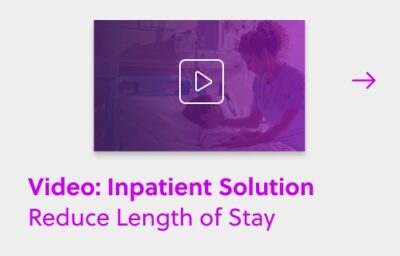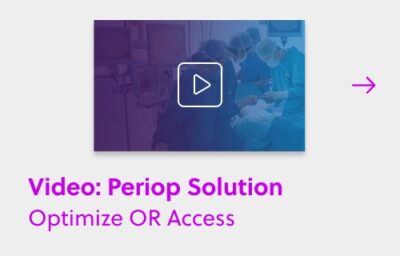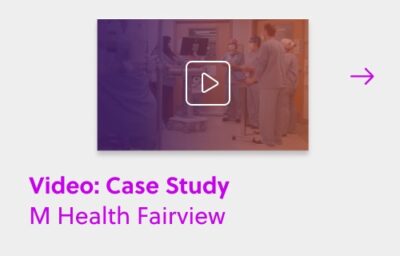In the dynamic world of healthcare, optimizing operating room (OR) efficiency is key to providing top-quality and value-of-care care for patients who need procedures. One of the key metrics in achieving this is block time utilization. At Qventus, we understand that maximizing this efficiency enhances resource allocation and improves patient outcomes. Our advanced surgical scheduling software and real-time data analytics tools are designed to optimize block time utilization, ensuring that every minute in the OR is used proficiently. Let’s dive into block time utilization and how optimizing it can help improve your hospital operations.
What is Block Time Utilization?
Block time utilization is a crucial metric in operating rooms (ORs) that measures how efficiently time is utilized. It represents the percentage of scheduled OR time used proficiently for patient care. Here’s a more detailed look to simplify the concept:
- Block Time: A pre-defined period in the OR schedule allocated to a particular surgeon or surgical team. This common form of scheduling ensures that experienced surgeons and high-value surgical groups have ample access to the OR.
- Utilization: This refers to the portion of block time actively used for surgeries and associated activities such as patient preparation, anesthesia induction, and equipment setup.
Block time scheduling helps create a routine for surgeons, making OR scheduling more manageable. However, there are some downsides:
- Accessibility Issues: Less experienced surgeons can struggle to find OR time, limiting their opportunities for practice and growth.
- Inefficiency: If the block owner doesn’t fill the allocated time, it often isn’t released back to the OR schedule in time for others to utilize it for high-value procedures. This inefficiency decreases overall utilization.
These downsides highlight where Qventus can help. By encouraging early release of unused block time through our block utilization predictions, we can optimize OR scheduling and improve overall efficiency.
Importance in Performance Reporting
Block time utilization is a key performance indicator (KPI) for OR management, essential for understanding resource allocation. This metric shows how well OR time is divided among surgeons and surgeries, highlighting potential discrepancies between the intended and actual time allocation to ensure that adequate time is given to high-demand procedure teams.
Surgeons and surgical groups (depending on whether the block is individual or group-based) are measured on their utilization. Not meeting utilization targets regularly can result in the block being taken away, providing an incentive for surgeons to maintain their utilization rate by either filling the time or releasing it back to the OR.
However, it’s not always easy for surgeons to know their utilization rate. Without a solution in place, hospitals may have to manually pull this data, requiring IT tickets and taking time. Consequently, getting up-to-date utilization metrics can be challenging for surgeons. Qventus’ insights suite addresses this by providing surgeons with this data in dashboards that update in near-real time. More importantly, when Qventus prompts a surgeon to release block time that is predicted to go unused, the email nudge includes the impact that releasing time will have on their utilization rate. By only suggesting that surgeons release time they are unlikely to need, and by providing important context on how releasing that time will positively impact their block utilization rate, Qventus customers see surgeons releasing block early at a much higher rate than without Qventus.
Optimizing Block Time Utilization
Many different strategies can improve block time utilization in ORs, leading to improved efficiency:
- Real-time Data Visibility: Using software that provides current information about block usage and resource availability promotes effective decision-making. It makes it possible to change plans on-the-fly: for example give the unused blocks to surgeons who require more time, or foresee delays.
- Flexibility: Allowing what is called unused block time to be automatically freed up by surgeons for reallocation to other surgeons in need of time will increase overall utilization.
- Encourage Release of Unused Time: OR Optimization software can predict time blocks that are unlikely to be used, and proactively nudge the block owner to release the time so it can be used by other surgeons. This helps eliminate unused block time and improves overall utilization.
- Collaboration: Encouraging transparent communication among surgeons, anesthesiologists, nurses and OR staff. When potential bottlenecks that cause underutilization are recognized and tackled, every member of the surgical team can help to improve efficiency.
The Block Time Optimization Solution
By understanding block time utilization and implementing optimization strategies, healthcare facilities can achieve greater efficiency in ORs. The Qventus approach tackles the challenges of optimizing, forecasting, and automating OR scheduling and utilization processes by integrating with your EHR and layering on billions of claims data points.
Powered by automation, artificial intelligence, machine learning, and behavioral science, our algorithms predict which block time slots will or will not be utilized. We intelligently nudge surgeons to release unused time and proactively recommend best-fit cases to fill open time based on surgeon practice patterns, health system priorities, and more. This includes predicting which blocks (and partial time blocks) are unlikely to be used and proactively nudging the surgeon to release the time.
Our ATO (Available Time Outreach) feature proactively markets released time to the best-fit surgeon most likely to use the time for a high-value procedure, ensuring optimal use of OR resources. This comprehensive approach leads to improved resource allocation, reduced wait times for patients, and better patient outcomes. By leveraging Qventus’ advanced features, healthcare facilities can enhance efficiency and patient care in the OR.


